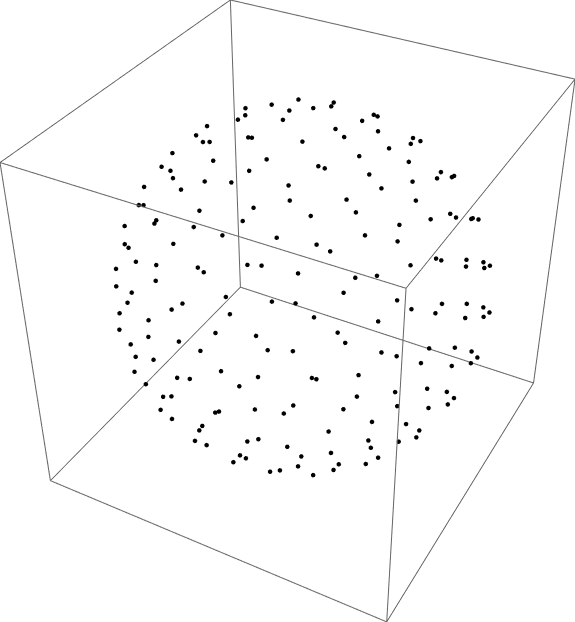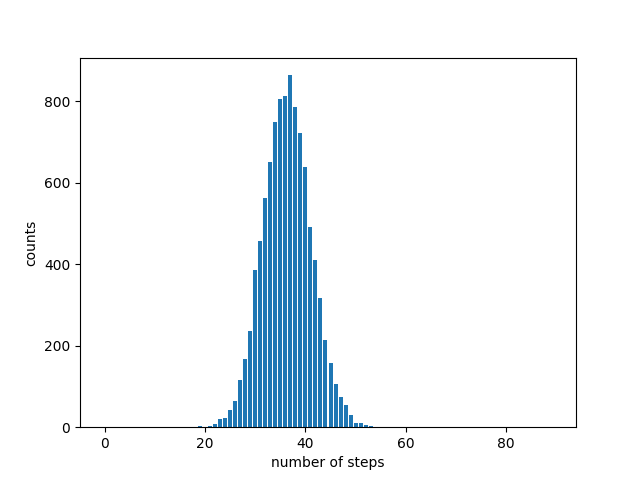The Boolean satisfiability problem is to determine whether there is a way to assign values to variables in a set of Boolean formulas to make the formulas hold [1]. If there is a solution, the next task would be to enumerate the solutions.
You can solve the famous eight queens problem, or its generalization to n-queens, by formulating the problem as a Boolean formula then using a SAT solver to find the solutions.
It’s pretty obvious how to start. A chessboard is an 8 by 8 grid, so you have a variable for each square on the board, representing whether or not that square holds a queen. Call the variables bij where i and j run from 1 to 8.
The requirement that every row contains exactly one queen can be turned into two subrequirements:
- Each row contains at least one queen.
- Each row contains at most one queen.
The first requirement is easy. For each row i, we have a clause
bi1 ∨ bi2 ∨ bi3 ∨ … ∨ bi8
The second requirement is harder. How do you express in terms of our boolean variables that there is no more than one queen in each row? This is the key difficulty. If we can solve this problem, then we’re essentially done. We just need to do the analogous thing for columns and diagonals. (We don’t require a queen on every diagonal, but we require that there be at most one queen on every diagonal.)
First approach
There are two ways to encode the requirement that every row contain at most one queen. The first is to use implication. If there’s a queen in the first column, then there is not a queen in the remaining columns. If there’s a queen in the second column, then there is not a queen in all but the second column, etc. We have an implication for each row in each column. Let’s just look at the first row and first column.
b11 ⇒ ¬ (b12 ∨ b13 ∨ … ∨ b18)
We can turn an implication of the form a ⇒ b into the clause ¬a ∨ b.
Second approach
The second way to encode the requirement that every row contain at most one queen is to say that for every pair of squares in a row (a, b) either a has no queen or b has no queen. So for the first row we would have 8C2 = 28 clauses because there are 28 ways to choose pairs from a set of 8 things.
(¬b11 ∨ ¬b12) ∧ (¬b11 ∨ ¬b13) ∧ … ∧ (¬b17 ∨ ¬b18)
An advantage of this approach is that it directly puts the problem into conjunctive normal form (CNF). That is, our formula is a conjunction of terms that contain only disjunctions, an AND of ORs.
Related posts
- Lessons Learned With the Z3 SAT/SMT Solver
- Special solutions to the eight queens problem
- How hard is constraint programming?
[1] You’ll see the SAT problem described as finding the solution to a Boolean formula. If you have multiple formulas, then the first holds, and the second, etc. So you can AND them all together to make one formula.







